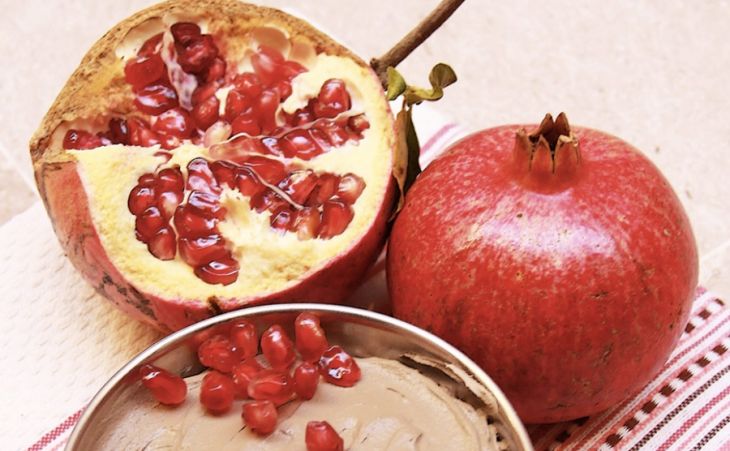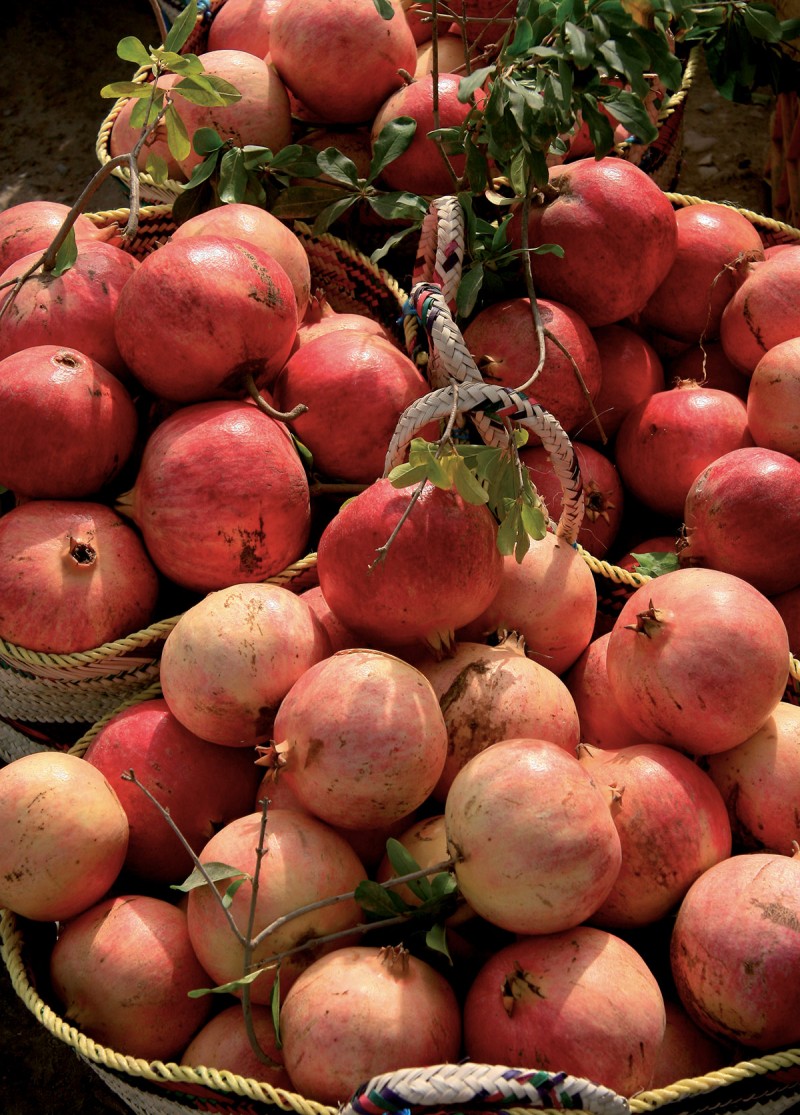
The pomegranate is the autumn fruit par excellence.
Several varieties are produced in Tunisia. The most popular are the ones from Gabes in the South, and the small town of Testour, west from Tunis, where a yearly festival is dedicated to this fruit.
In Tunisia, pomegranate seeds are sprinkled on the mesfouf (a sweet couscous drizzled with milk, served for breakfast). It also accompanies the bsissa, a paste made of sweet flavored milled grilled cereals.
Pomegranate jam flavored with grilled sesame seeds is a traditional recipe. But most often, pomegranate can be eaten raw, crunched seed by seed, or simply sprinkled with sugar and orange flower water.
The pomegranate is named “romman” in Arabic. Tunisians love to “farrek la rommana” (pop the pomegranate), literally or also figuratively: it means talking about an issue frankly and in detail.
Tunisia and pomegranate, it’s a long story.
Its scientific name is Punica granatum and Romans called it “Punic apple” – the Punics were the western Phoenicians whose capital was Carthage.
Indeed, pomegranate was introduced in Tunisia by the Phoenicians, and then spread out to Italy.
In the 1st century A.D., the Roman writer Pliny the Elder already reported the culture of pomegranate trees in the oasis of Gabes. Magon, a great Carthaginian agronomist, gave precious advice about the culture of pomegranate trees in his famous treatise.
Symbol of fertility, the pomegranate was an attribute of Tanit, Carthage’s great goddess. It can be seen on ancient stelae of Tunisia.
